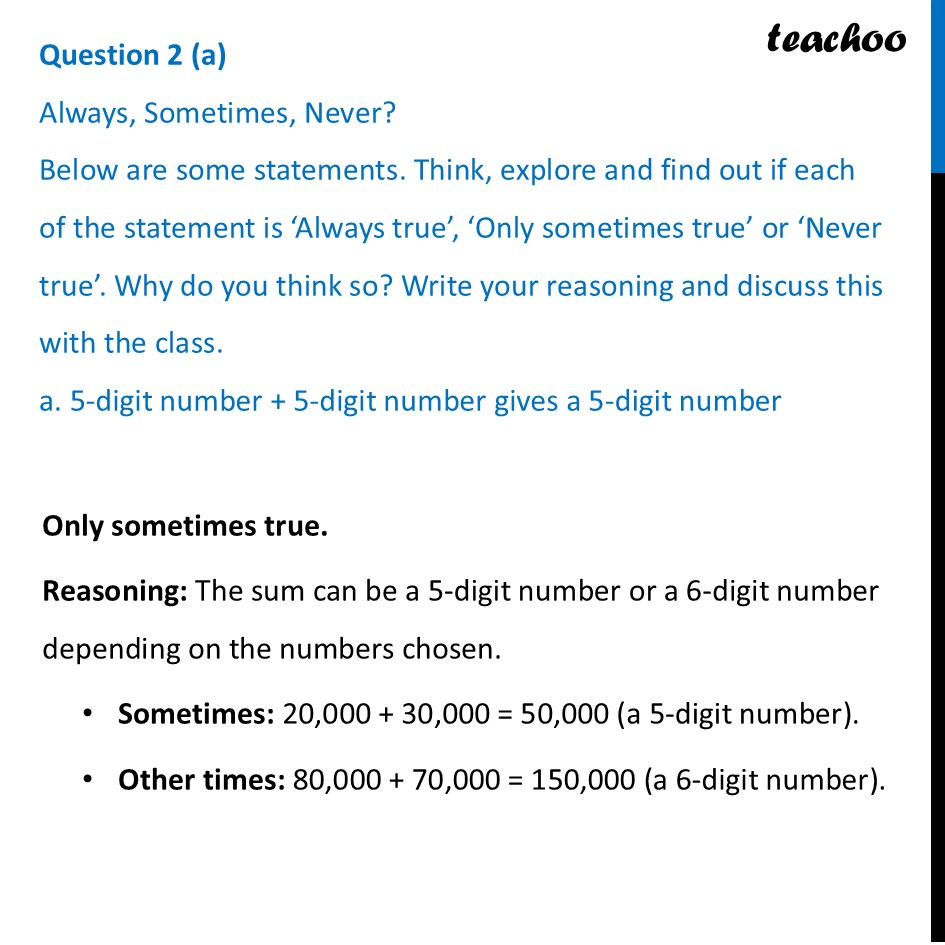
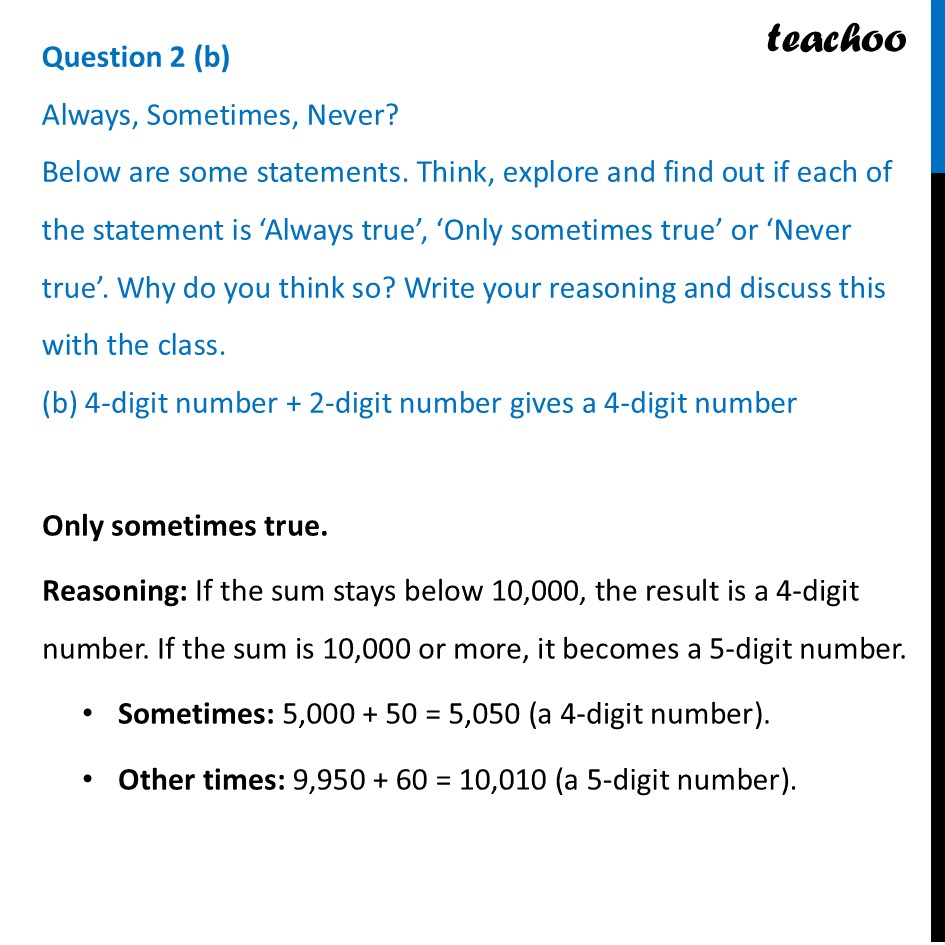
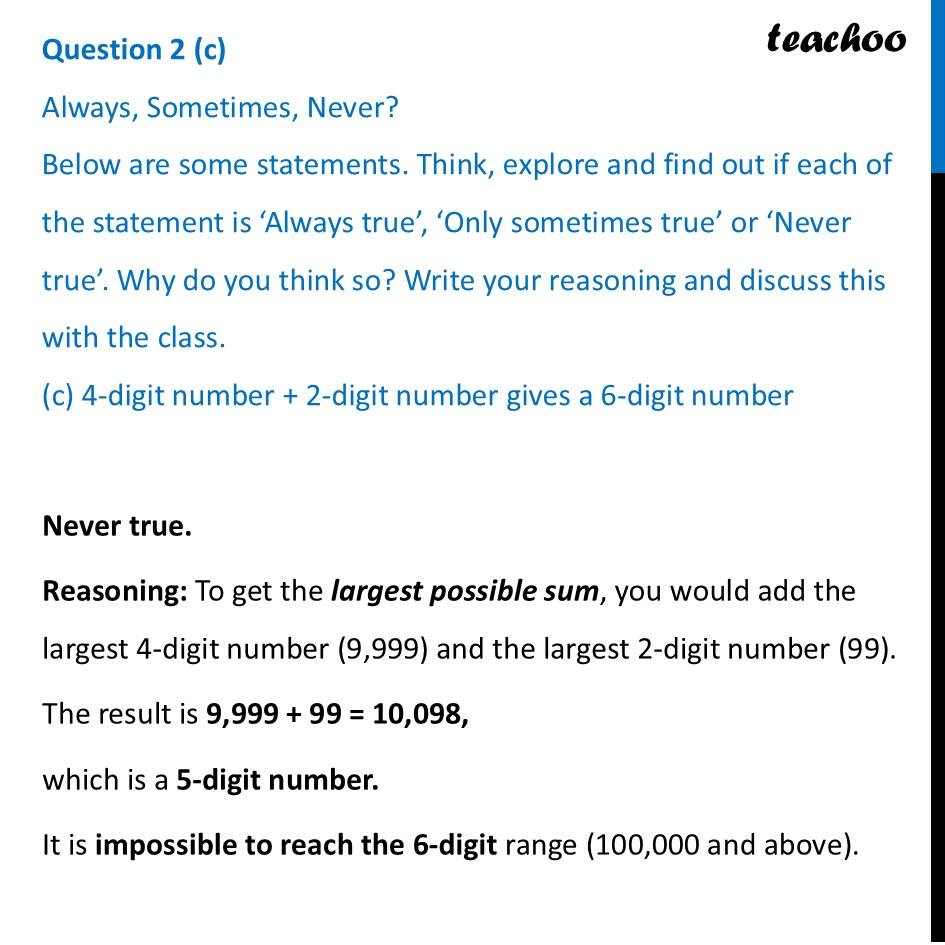
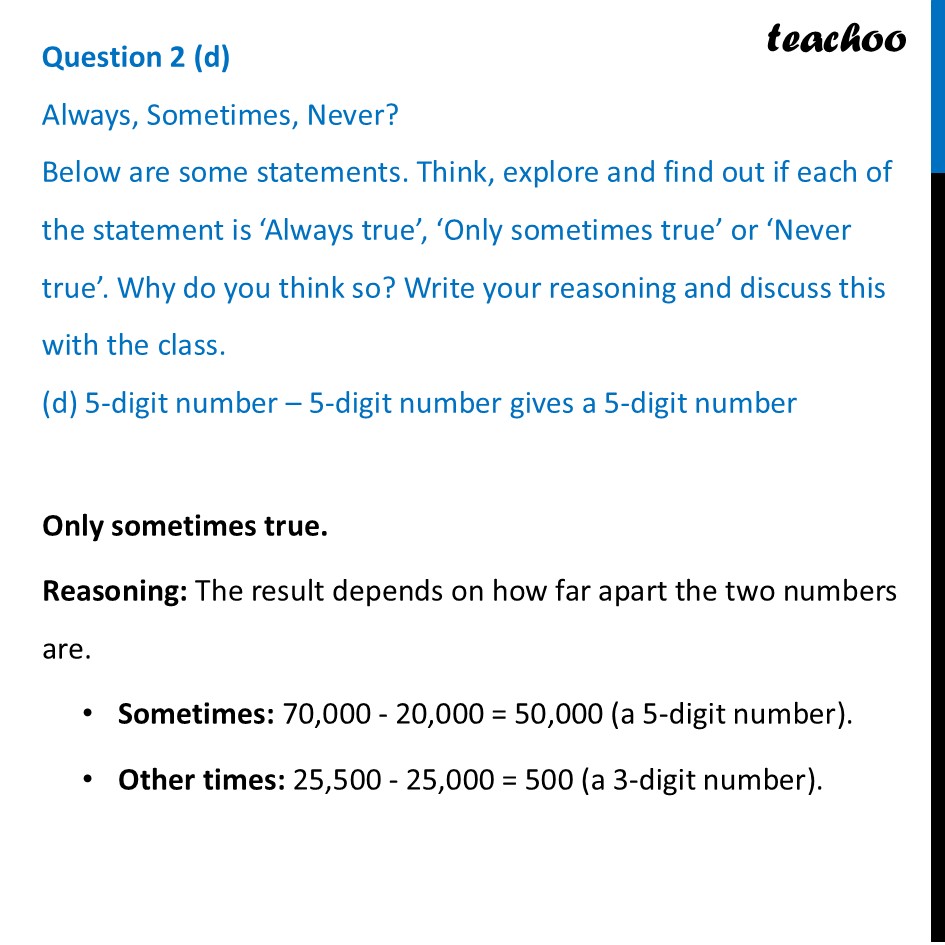
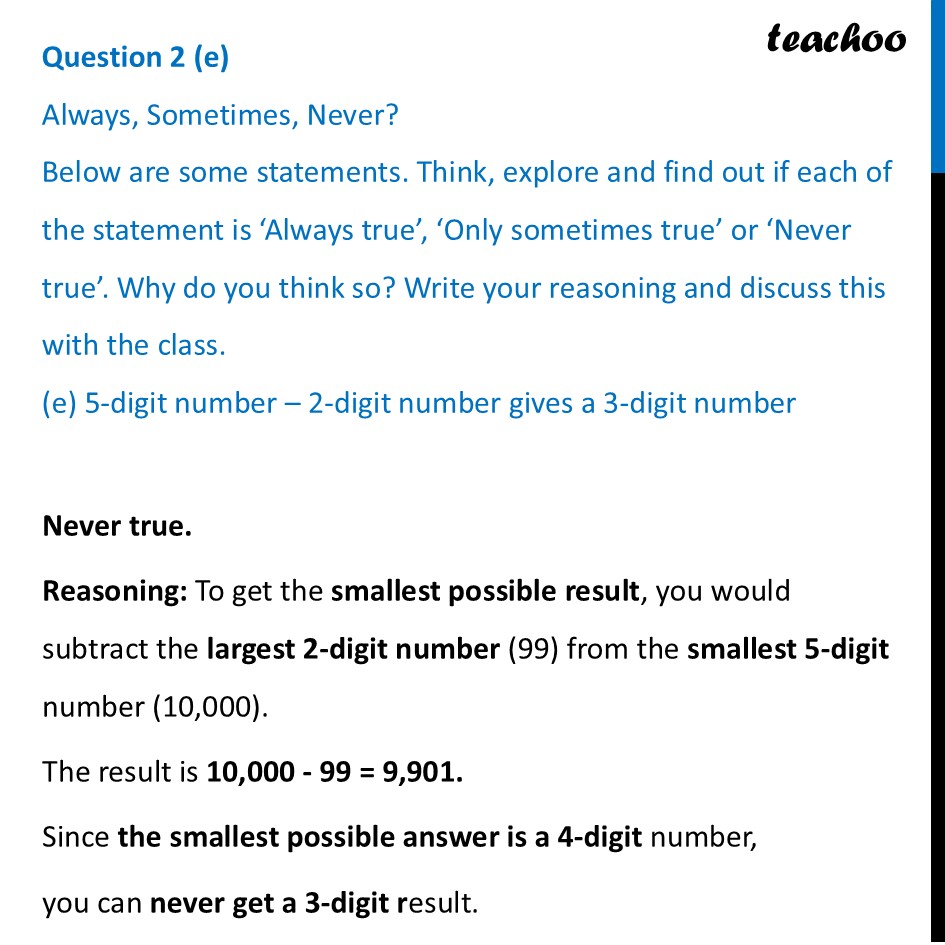
Mental Math
Last updated at September 26, 2025 by Teachoo





Transcript
Question 2 (a) Always, Sometimes, Never? Below are some statements. Think, explore and find out if each of the statement is ‘Always true’, ‘Only sometimes true’ or ‘Never true’. Why do you think so? Write your reasoning and discuss this with the class. a. 5-digit number + 5-digit number gives a 5-digit number Only sometimes true. Reasoning: The sum can be a 5-digit number or a 6-digit number depending on the numbers chosen. Sometimes: 20,000 + 30,000 = 50,000 (a 5-digit number). Other times: 80,000 + 70,000 = 150,000 (a 6-digit number). Question 2 (b) Always, Sometimes, Never? Below are some statements. Think, explore and find out if each of the statement is ‘Always true’, ‘Only sometimes true’ or ‘Never true’. Why do you think so? Write your reasoning and discuss this with the class. (b) 4-digit number + 2-digit number gives a 4-digit number Only sometimes true. Reasoning: If the sum stays below 10,000, the result is a 4-digit number. If the sum is 10,000 or more, it becomes a 5-digit number. Sometimes: 5,000 + 50 = 5,050 (a 4-digit number). Other times: 9,950 + 60 = 10,010 (a 5-digit number). Question 2 (c) Always, Sometimes, Never? Below are some statements. Think, explore and find out if each of the statement is ‘Always true’, ‘Only sometimes true’ or ‘Never true’. Why do you think so? Write your reasoning and discuss this with the class. (c) 4-digit number + 2-digit number gives a 6-digit number Never true. Reasoning: To get the largest possible sum, you would add the largest 4-digit number (9,999) and the largest 2-digit number (99). The result is 9,999 + 99 = 10,098, which is a 5-digit number. It is impossible to reach the 6-digit range (100,000 and above). Question 2 (d) Always, Sometimes, Never? Below are some statements. Think, explore and find out if each of the statement is ‘Always true’, ‘Only sometimes true’ or ‘Never true’. Why do you think so? Write your reasoning and discuss this with the class. (d) 5-digit number – 5-digit number gives a 5-digit numberOnly sometimes true. Reasoning: The result depends on how far apart the two numbers are. Sometimes: 70,000 - 20,000 = 50,000 (a 5-digit number). Other times: 25,500 - 25,000 = 500 (a 3-digit number). Question 2 (e) Always, Sometimes, Never? Below are some statements. Think, explore and find out if each of the statement is ‘Always true’, ‘Only sometimes true’ or ‘Never true’. Why do you think so? Write your reasoning and discuss this with the class. (e) 5-digit number – 2-digit number gives a 3-digit numberNever true. Reasoning: To get the smallest possible result, you would subtract the largest 2-digit number (99) from the smallest 5-digit number (10,000). The result is 10,000 - 99 = 9,901. Since the smallest possible answer is a 4-digit number, you can never get a 3-digit result.